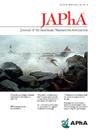重印本:对住院病人的助眠剂和促进睡眠方法的评估。
IF 2.5
4区 医学
Q3 PHARMACOLOGY & PHARMACY
Journal of the American Pharmacists Association
Pub Date : 2024-07-01
DOI:10.1016/j.japh.2024.102182
引用次数: 0
摘要
背景:内科病房收治的病人中,有一半报告睡眠受到干扰,这增加了睡眠不足的风险。非药物干预是改善睡眠的第一步。然而,使用助眠剂的情况仍然很普遍。有关在不同护理过渡期间开具助眠处方的数据十分有限:本研究旨在描述目前在成人医疗人群中评估睡眠和开具促进睡眠的药物处方的做法:本研究设计为一项单中心、回顾性、观察性队列研究,研究对象为 3 个月内(2019 年 9 月至 2019 年 11 月)由普通内科团队出院的所有患者。在入院前,记录了住院和出院时的助眠处方,并评估了睡眠评估和非药物干预的记录:在纳入的 754 名患者中,有 211 人(28%)在住院期间开具了助眠处方。住院期间,124 名患者(16%)至少接受了一次有记录的睡眠评估,只有 22 名患者(3%)接受了非药物促进睡眠的住院治疗。住院患者处方最多的助眠药物是褪黑素(50%),入院前(35%)和出院时(25%)也是如此。总体而言,入院至出院期间,助眠处方的相对减少率为67%:结论:住院病人开具助眠处方在内科病人中很常见。尽管如此,睡眠评估和非药物干预的标准护理却很少被采用。今后的工作重点应放在实施相关策略上,使睡眠评估和非药物睡眠促进成为住院环境中的常规工作并保持一致。本文章由计算机程序翻译,如有差异,请以英文原文为准。
Reprint of: An assessment of a sleep aid and sleep promotion practices in hospitalized medical patients
Background
Half of patients admitted to medicine units report sleep disruption, which increases the risk of sleep deprivation. Non-pharmacological interventions are the first step to improving sleep. However, utilization of sleep aids continues to be prevalent. Limited data are available on sleep aid prescribing practices across transitions of care.
Objectives
The aim of this study was to describe the current practices for assessing sleep and prescribing pharmacologic agents to promote sleep in the adult medicine population.
Methods
This study was designed as a single-center, retrospective, observational cohort study of all patients discharged by the general medicine teams over a 3-month period (September 2019- November 2019). Prior to admission, inpatient and discharge prescriptions for sleep aids were recorded, and documentation of sleep assessments and non-pharmacological interventions were evaluated.
Results
Of 754 patients included, 211 (28%) were prescribed a sleep aid while inpatient. During hospitalization, 124 (16%) patients had at least one documented sleep assessment, and only 22 (3%) were ordered the institutional non-pharmacological sleep promotion order set. The most prescribed sleep aid in inpatients was melatonin (50%), as well as prior to admission (35%) and at discharge (25%). Overall, the relative reduction in sleep aid prescriptions between admission and discharge was 67%.
Conclusion
Inpatient sleep aid prescribing is common in medical patients. Despite this, sleep assessments and the standard of care of non-pharmacological interventions are rarely utilized. Future efforts should focus on implementation of strategies to make sleep assessments and non-pharmacological sleep promotion routine and consistent in the inpatient setting.
求助全文
通过发布文献求助,成功后即可免费获取论文全文。
去求助
来源期刊
CiteScore
3.30
自引率
14.30%
发文量
336
审稿时长
46 days
期刊介绍:
The Journal of the American Pharmacists Association is the official peer-reviewed journal of the American Pharmacists Association (APhA), providing information on pharmaceutical care, drug therapy, diseases and other health issues, trends in pharmacy practice and therapeutics, informed opinion, and original research. JAPhA publishes original research, reviews, experiences, and opinion articles that link science to contemporary pharmacy practice to improve patient care.

 求助内容:
求助内容: 应助结果提醒方式:
应助结果提醒方式:


